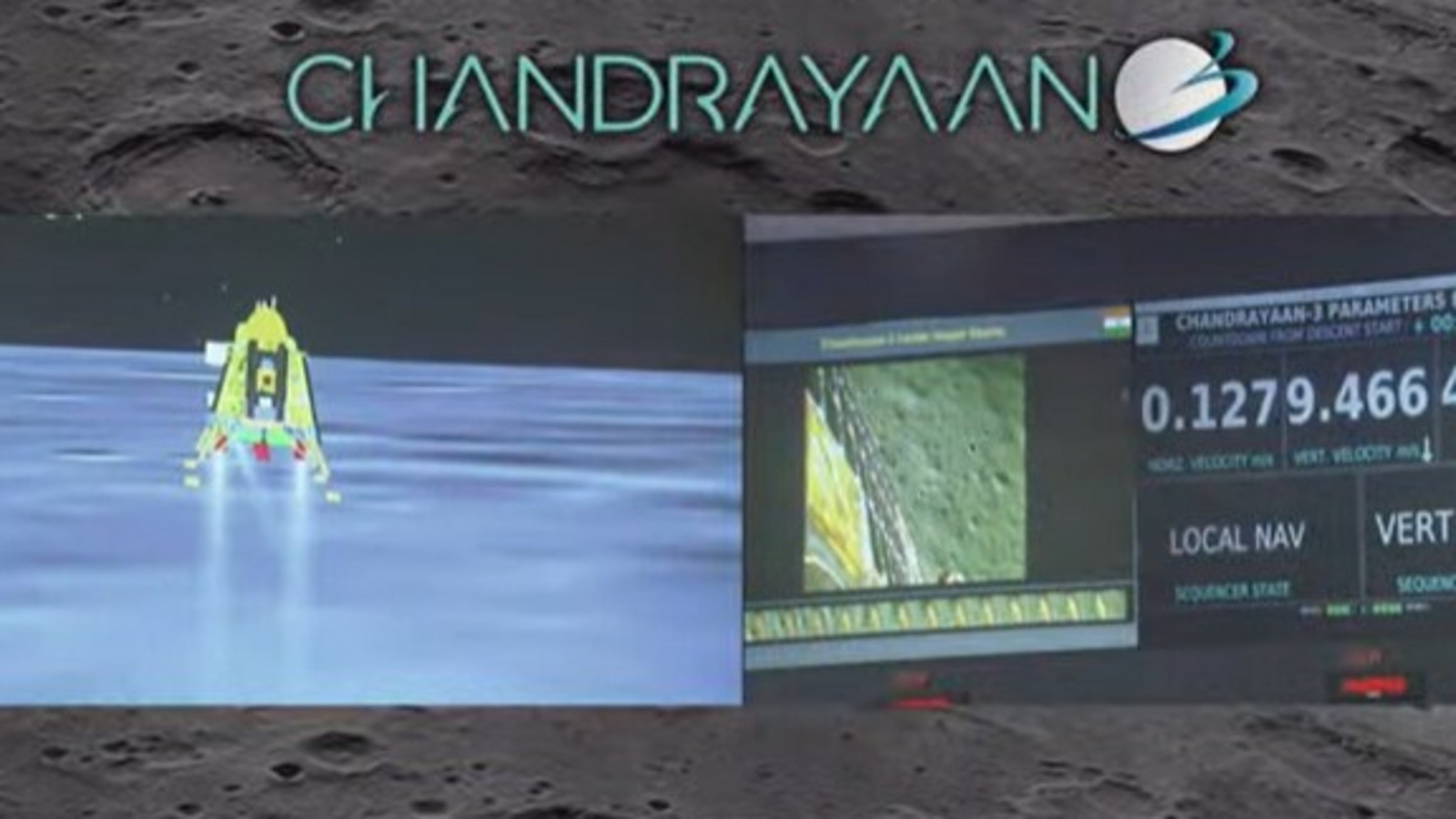
Modi Co-opting Chandrayaan-3 Success For Hindutva Propaganda?
Well before India's Chandrayaan-3 landed on the moon on August 23, India's "Godi Media" started showing split screens with the landing craft...
Well before India's Chandrayaan-3 landed on the moon on August 23, India's "Godi Media" started showing split screens with the landing craft’s animated image alongside a photo of Indian Prime Minister Narendra Modi. It was clearly meant to give him exclusive credit for ISRO scientists' major accomplishment after their decades-long hard work. This Hindutva propaganda has echoes of Adolf Hitler’s use of the 1936 Berlin Olympics to promote his Nazi ideology. It is boosting the morale of the hateful Hindu supremacist trolls unleashed by the BJP “IT cell” on social media. It is easy to conclude that the Chandrayaan is now essentially a prestige project for the Hindu Nationalist government in New Delhi. Funding such projects is easier for politicians than implementing social sector programs to uplift hundreds of millions of poor and hungry Indians who are deprived of the most basic necessities.
It is clear that Mr. Modi wants to claim credit for the moon landing but he refuses to take responsibility for high unemployment and widespread malnutrition in the world’s largest population living in extreme poverty in India. Nor does the Modi regime accept the blame for millions of preventable COVID19 deaths in India in 2020-21. This is what Princeton economist Professor Ashoka Mody, the author of “India is Broken”,refers to as India’s “lived reality”. Here's an excerpt from Mody's book:
"The grim reality is that, to employ all working-age Indians, the economy needs to create 200 million jobs over the next decade, an impossible order after the past decade of declining employment numbers.1 Right from independence, the Indian economy produced too few jobs. For more than 80 percent of Indians, the informal sector employment became the safety net, where workers idled for long stretches, earning below- or barely-above-poverty wages. Demonetization in 2016, a poorly executed goods and services tax in 2017, and COVID-19 in 2020 and 2021 struck hammer blows on the informal sector while creating no new options. Indeed, technology accelerated job destruction, especially in retail and wholesale trade. More Indians just stopped looking for work. Set against this bleakness, many pundits and leaders look back to celebrate and draw hope from India’s high GDP growth rates of the 1990s and 2000s. That celebrated celebrated growth, however, was an outcome of unusually buoyant world trade, rampant natural resource use, and a domestic finance-construction bubble. Even as wealthy Indians accumulated astonishing riches, job creation remained weak. The most severe forms of poverty came down, but still afflicted over 20 percent of Indians; another 40 percent lived precariously, ever at risk of falling back into a dire existence. The median Indian lived in that vulnerable zone—and, looking through a government-induced data fog, still lives there. The unchanging problem through the post-independence years has been the lack of public goods for shared progress: education, health delivery, functioning cities, clean air and water, and a responsive and fair judiciary. Along with scarcity of jobs, the absence or poor quality of public goods makes the lived reality of vast numbers."
India ranks 110 among 170 countries on the Social Progress Index (SPI), according to a dataset published by the Social Progress Imperative, a non-profit organization. The Social Progress Index combines 52 social and environmental indicators.
Over 75% of the world's poor who are deprived of basic living standards (nutrition, cooking fuel, sanitation and housing) live in India compared to 4.6% in Bangladesh and 4.1% in Pakistan, according to a recently released OPHI/UNDP report on multidimensional poverty. Here's what the report says: "More than 45.5 million poor people are deprived in only these four indicators (nutrition, cooking fuel, sanitation and housing). Of those people, 34.4 million live in India, 2.1 million in Bangladesh and 1.9 million in Pakistan—making this a predominantly South Asian profile".
Related Links:
Haq's Musings
South Asia Investor Review
India is Home 75% of World Population Deprived of Basic Living Standards
Hindu Nazis Join Forces With White Supremacists
America Does Not Respect India
India in Crisis: Unemployment and Hunger Persist After COVID
Impact of Russia Sanctions on Food, Fuel Availability
Record Number of Indians Seeking Asylum in US
Vast Majority of Pakistanis Support Imran Khan's Handling of Covid19 Crisis
Incomes of Poorest Pakistanis Growing Faster Than Their Richest Counterparts
Pakistanis Consuming More Calories, Fruits & Vegetables Per Capita
How Grim is Pakistan's Social Sector Progress?
Pakistan Fares Marginally Better Than India On Disease Burdens
COVID Lockdown Decimates India's Middle Class
Pakistan Child Health Indicators
Pakistan's Balance of Payments Crisis
How Has India Built Large Forex Reserves Despite Perennial Trade Deficits
Riaz Haq's Youtube Channel
PakAlumni Social Network

Modi Co-opting Chandrayaan-3 Success For Hindutva Propaganda?
Well before India's Chandrayaan-3 landed on the moon on August 23, India's "Godi Media" started showing split screens with the landing craft...













